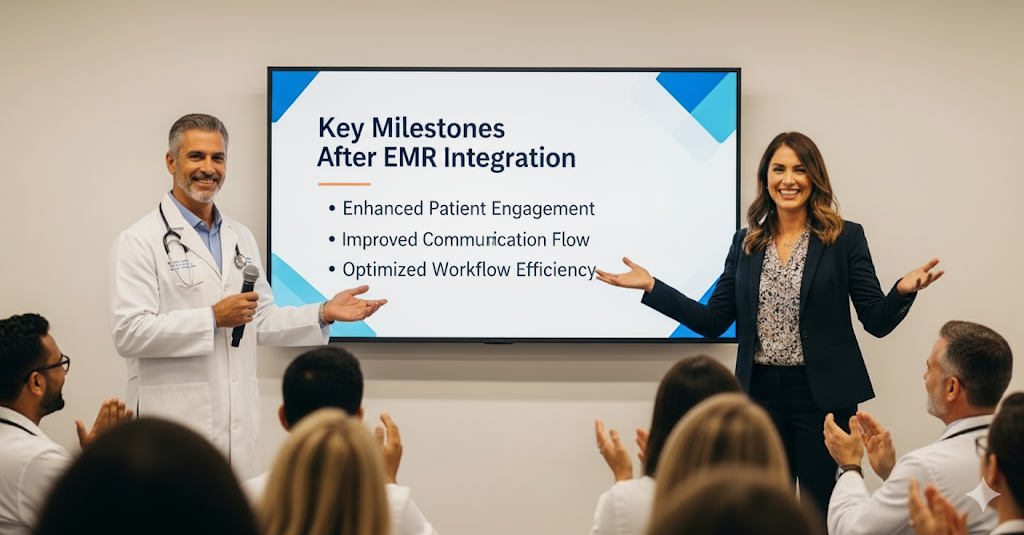12 Actionable Strategies for How to Improve Medical Billing Process
In the complex ecosystem of healthcare, the financial health of your practice is just as critical as the well-being of your patients. The medical...
6 min read
Gregory Vic Dela Cruz : 8/12/25 10:00 AM

Revenue Cycle Management (RCM) is the financial engine of every clinic. It spans patient registration, insurance verification, coding, claims submission, patient billing, and collections. When even one step breaks, cash flow slows, staff time is wasted, and the patient experience suffers.
This guide shows you how to modernize RCM with practical software and workflows for clinics. You’ll get an actionable checklist for automating eligibility checks, claim scrubs and submissions, patient statements, and follow‑ups—plus tips to reduce denials and days in A/R.
Ready to replace manual status checks and sticky‑note follow‑ups with predictable, tech‑enabled processes? Let’s jump right in.
Effective revenue cycle management relies on a clear workflow for clinics that standardizes tasks from the first patient touch to final payment. Think of RCM as six linked stages:
Each stage produces data the next stage depends on; gaps in one stage create denials and delays downstream.
RCM thrives on repeatability. Document your SOPs, embed them in your software (rules, templates, and automated queues), and measure performance weekly. Anchor on a few metrics: clean‑claim rate, first‑pass resolution, denial rate by payer/reason, days in A/R by bucket, and patient pay time‑to‑cash. Review outliers in a brief revenue huddle and assign owners for fixes.
With these foundations, your workflow for clinics becomes predictable, auditable, and easier to scale.
The solution is to automate handoffs and surface exceptions. Start by mapping each failure to a rule:
These fixes align with the tools we’ll cover next: revenue cycle management healthcare platforms, healthcare revenue cycle management automation, and patient‑friendly payment flows. Implement them step‑wise to address your highest‑impact failure points first.

These “now” automations form the backbone of revenue cycle management healthcare programs that scale without adding headcount.
High‑deductible plans mean more balances shift to patients. If paying is hard—paper statements, no mobile link, phone‑only options—cash lags and staff spend hours chasing balances. Modern healthcare revenue cycle management meets patients where they are: on their phones.
Result: faster patient payments, fewer inbound billing calls, and a better experience—all while maintaining audit trails and HIPAA compliance. Curogram complements your PM/EMR rather than replacing it, so you can modernize without ripping and replacing core systems.
A structured workflow for clinics is not just a list of tasks—it’s the backbone of sustainable revenue cycle management. By following a clear, step-by-step process, you minimize the risk of revenue leakage at every stage. For example, a missed eligibility check can cascade into unpaid claims and unpaid patient balances, costing both time and money. Similarly, failure to reconcile charges daily can result in entire visits going unbilled.
When this checklist is paired with automation, the benefits multiply. Eligibility verification tools, automated claim scrubbing, and digital patient billing systems handle repetitive tasks instantly, freeing your staff to focus on exceptions and patient service. Moreover, integrated reporting makes it easy to spot patterns—such as a spike in denials from a single payer—so you can correct root causes quickly.
Finally, consistent governance ensures that improvements stick. By holding short, focused revenue huddles and reviewing KPIs regularly, you keep your team aligned and accountable. Over time, this transforms billing from a reactive, stressful process into a predictable, proactive engine for clinic growth.
RCM doesn’t improve by accident—it improves by design. With clear workflows for clinics, targeted automation, and patient‑friendly payments, you can raise clean‑claim rates, shorten A/R cycles, and free staff from manual busywork.
From eligibility to patient pay, Curogram helps you operationalize the details with HIPAA‑compliant messaging, digital forms, reminders, and Text‑to‑Pay—so your team spends less time chasing balances and more time serving patients.
All set to modernize your revenue cycle? Request a Curogram demo and turn your billing workflows into a predictable, scalable engine for growth.

In the complex ecosystem of healthcare, the financial health of your practice is just as critical as the well-being of your patients. The medical...

💡Covina Arthritic Clinic boosted revenue by streamlining appointment confirmations with Curogram’s integrated system. By automating reminders and...